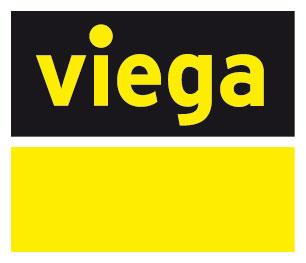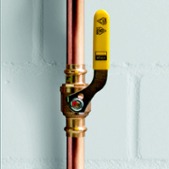In hydronic and radiant piping systems, PEX is a simple acronym that tends to come up. PEX isn’t like most acronyms, where each letter stands for a word. Instead, PEX is a bit fancier — X stands for cross-linked, while P and E stand for polyethylene. In the cross-linking process, polyethylene molecules are bonded together to produce a stronger material that can better withstand heightened pressures, temperatures and resistance.
While widely used in the residential sector (with a growing presence in the commercial space), not everyone in the field is familiar with what PEX entails. We want to help provide clarity on the topic, which begins with answering the simplest of questions: what does PEX stand for?
An Introduction to PEX
When the first PEX material was prepared in the 1930s, the radiation method was used to establish cross-links. In this scenario, high-energy electrons are applied to the polyethylene to break chains and fuel radical formation.
Since then, other methods that are easier to work with have surfaced. There’s the peroxide technique, where peroxide is decomposed into radicals that form a cross-linked network, and the silane technique, where crosslinking is initiated by a water bath.
You may also hear these three methods referred to as PEX-a (peroxide), PEX-b (silane) and PEX-c (radiation). There’s often the misconception that this is a quality rating system. However, this is not true. The PEX-a/b/c nomenclature strictly refers to the manufacturing process.
Manufacturing Standards for PEX
While discussing what PEX stands for, we also wanted to help decipher another important element of this material type: the four-digit material designation code that is printed on the tubing as a quality standard.

Let’s use the example of PEX tubing with a printed rating of 5306. The first number refers to the chlorine resistance, the second refers to the UV resistance and the final two refer to the hydrostatic design stress, or HDS, at 73 degrees Fahrenheit. In this case, the material designation code indicates that the PEX tubing is suitable for installation areas with constant hot water circulation and that it has a maximum UV exposure of six months. (For a more in-depth overview of PEX material designation codes, see this resource.)
In terms of cross-linking techniques, Viega’s silane (PEX-b) delivers the highest degree of chlorine and UV resistance according to industry standards and also has higher burst pressures in comparison to the peroxide method (PEX-a). This can be attributed back to the 3D molecular bonding that takes place in the cross-linking process.
At Viega, we use silane cross-linked PEX to deliver the maximum performance across various applications. Visit our project profiles to see some examples of success stories.









